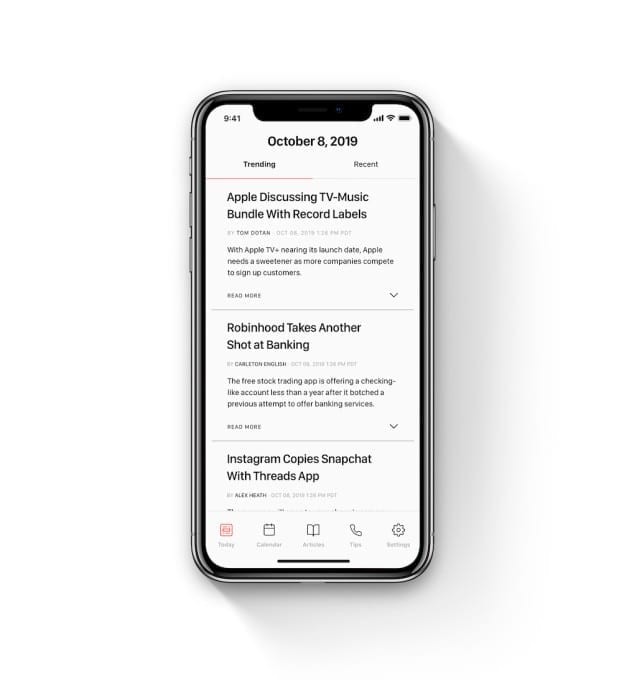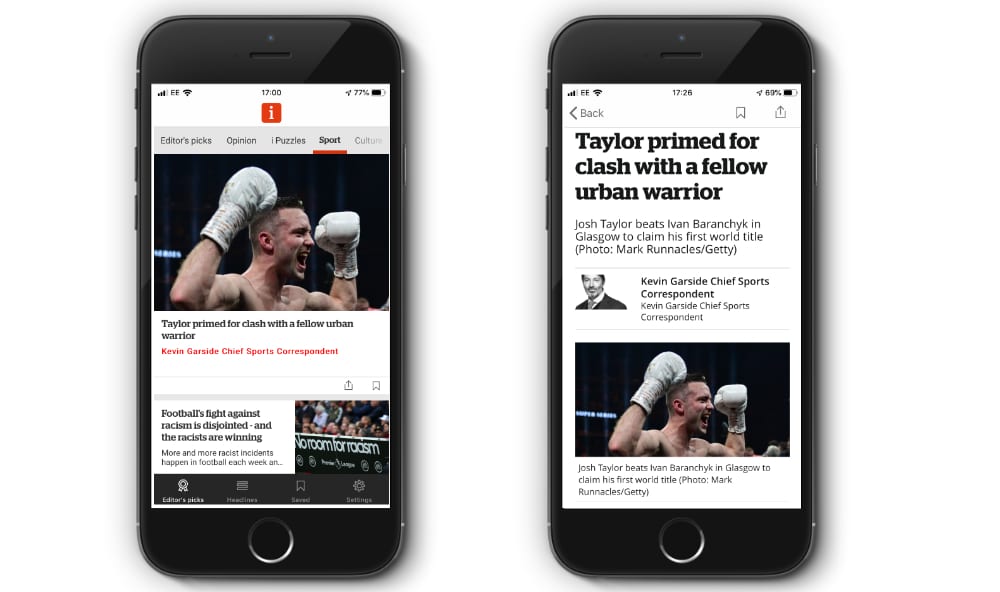|
Getting your Trinity Audio player ready...
|
The past six weeks have seen a number of significant paid app launches, from The Atlantic to inews and The Guardian. Esther Kezia Thorpe looks at what’s behind this rush back to publisher apps, and why audiences will be willing to pay for them.
The launch of the iPad was seen by many as the dawn of a new kind of digital magazine. Magazine and newspaper ‘pages’ were painstakingly reimaged until they were pixel perfect, covers would quite literally sing and dance, and issues were stuffed with all sorts of interactive features; usually with hefty download sizes to match.
These digital issues were works of art, and were beautifully crafted, there’s no doubt about it. But across the board, downloads struggled to meet expectations, and costs far outstripped the returns.
As tablet adoption plateaued, some publishers shifted their focus to responsive apps, with lighter downloads that flowed to mobile devices of any size. In a way, this took the fun and innovation out of it, and apps became little more than an extension of websites.
Some publishers stuck to their guns. The Times and The Economist are just two examples of publishers who have seen success by putting effort into a product that directly addressed the needs of their audiences, but they also have the advantage of national – and global – scale.
For others who didn’t get the numbers they needed, apps have been put on the back burner. Most receive little attention or investment, either with PDF replicas being uploaded straight in, or ingesting basic RSS feeds.
But over the last four weeks alone, a number of publishers have either launched or heavily revamped their app offerings. Why apps, and why now?
Four weeks of launches
First up in this flurry of apps was The Guardian, who released a subscriber-only ad-free daily app on 17th October. The ‘more streamlined news product’ lets users scroll horizontally through the paper’s sections.

Ironically for a paid product, the app will contain no member-only content, and will actually carry fewer stories than the website. But The Guardian is betting on this being a key part of the appeal.
Director of Digital Reader Revenues Juliette Laborie told Digiday that user research has shown that readers feel overwhelmed with the constant flow of news, and struggle to know what to focus on. The Guardian has packaged the app accordingly, with sections carrying between 8-35 stories a day.
Hot on the heels of The Guardian’s app launch was an announcement from premium business tech news site The Information. They will be bringing out a $29 per year app called Ticker, aimed at consumers who are interested in keeping up-to-date with the latest tech news.
It’s a smart move to introduce a wider audience to their $399-a-year reporting, establishing them as a leader in the minds of consumers as well as business professionals, although it’s worth noting none of The Information’s full articles are included in Ticker. (N.B. After the launch announcement, The Information have since rebranded the app to be called the ‘Tech Top 10’).

Just days later on October 22nd, JPIMedia launched a new version of the i newspaper app. Built with the specific goal of ‘cutting through the noise’, the app allows three free articles a day, before asking for £5.99 a month.
The inews app will publish three ‘editions’ each day, as well as a breaking news feed. It will feature content ‘hand-picked by specialist editors’, including newsroom exclusives and premium content.

The final app launch of note was from The Atlantic in mid-November. The app’s content is only available to subscribers of The Atlantic, although there’s a ‘Today’ tab with article summaries which can be viewed for free.
As with the other publishers, there was a previous version called ‘The Atlantic Magazine app’. While the number of users was low, the publisher reported that three-quarters of those who downloaded it visited it three or more times a week.

A crucial point to note with all these launches is that they all require readers to pay to access them. Gone are the days of offering app content for free to convince people to download and read it. These products have their own special purpose in the new reader revenue world.
Audience value
There are a number of reasons behind this re-focusing on apps, and why the timing is so interesting.
Firstly, it has come with an acceptance that apps are never going to achieve the same scale as publisher websites. So instead, they’re being used to identify and add value for the most loyal subscribers.
Matt Skibinski, reader revenue adviser for The Lenfest Institute put it excellently when talking to Digiday about The Atlantic’s relaunch. He pointed out that publishers focus conversion efforts on the web, because more customer conversions take place on desktop than on mobile.
But because more consumption happens on mobile, apps are a great opportunity to increase loyalty. “An app like this might help with conversion, but it’s really a retention play,” he said.
Building a habit – and subsequently engagement – is vital for publishers who are developing reader revenue streams. Indeed, it could be argued that the industry’s swing to reader revenue has given apps a new lease of life.
Jonny Kaldor, Co-Founder and CEO of publisher app provider Pugpig, says that this has been reflected in the statistics their clients see about engagement.
“Engagement in apps is significantly higher than what can be achieved on the web,” he said, explaining that the apps they build for publishers “show an average session duration of over 20 minutes, with readers opening these apps 13.5 days every month.”
“While apps find it difficult to acquire new readers, they’re extremely effective at driving up reader engagement, and having a material impact on the average revenue per user.”
Some have suggested that Apple’s move to try and get people paying for news with Apple News+ is partly responsible for this influx of paid apps. Whether it’s the thought of a tech giant hoovering up yet more revenue, or whether it’s a hope that people will now pay for app content spurring publishers on, these will undoubtedly not be the last launches of this kind that we see.
But there’s another factor which deserves mention, and that is that these publishers have finally got to grips with digital; how people consume content on mobile and around their daily lives, rather than being shackled to a print-to-digital conversion mindset.
Revisiting editions
Understanding digital behaviour has driven another common theme between these apps which may seem counterintuitive at first glance: the edition.
The idea of releasing digital content in editions was pioneered by The Times when they dropped rolling news for four editions a day across their digital properties in 2016. They said at the time that an edition-based publishing model reflected their readers’ daily routines, and allowed their journalists to produce ‘more considered work’ than they could on a rolling deadline.
Timed content drops were also a stand-out feature for The Pool when it was still publishing, based on surveying women about how and when they wanted to read their content.
Many in the industry raised their eyebrows at the prospect of returning to editions when The Times announced their plans. After all, an edition is something you put together when limited by print. Without being restricted by print runs and delivery schedules, bundles of content make no sense.
But, faced by an overwhelming amount of content continuously streaming out of newsrooms, it seems readers are craving structure again.
“The experience of reading news on the internet (especially if you’re getting it through social media) is, honestly, bad. The constant conveyor belt of content delivers article after article, each claiming to be more important than the last. It’s pure information overload, and if you don’t have hours of free time, it’s difficult to know what’s important, what’s not, and what you can trust.”
inews app launch statement
The i paper has said that its new inews app will be releasing content three times a day, at midday, 5pm and midnight, with the latest stories ready for the morning. And whereas The Guardian isn’t specifically timing the release of its content, their app will have a curated, readable quantity of content delivered each day.
A common thread running through all these app launches is that audiences are overwhelmed, and want a place they can go to get reliable – and finite – news.
What remains to be seen is whether they are willing to pay for it, and subsequently whether publishers can accept lower numbers as a trade for much higher engagement.



